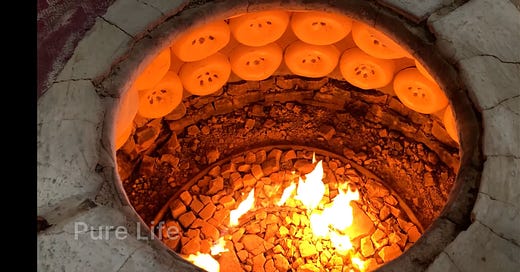Fresh Batch #89: Cultural Diffusion Through Bread-Making & Statue-Making Techniques
Tandoor Ovens, Lost-Wax Casting, Mason’s Marks
Something as simple as techniques used to make bread can prove cultural diffusion. For example, the following three images are screenshots from a video about bread made in Samarkand (the old capital of Tartaria).
Legendary SAMARKAND Breads | How to bake 12,000 loaves of bread a day
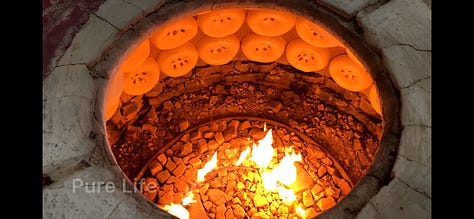


The exact same style, albeit in a more rural fashion, is also seen in Azerbaijan.
Juicy Lamb Kebab with Delicious Tandoor Tortilla
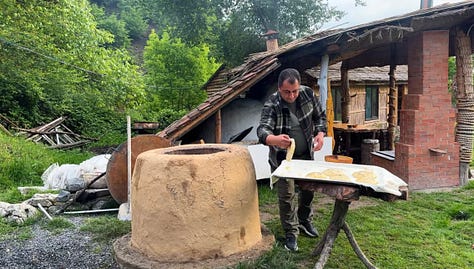
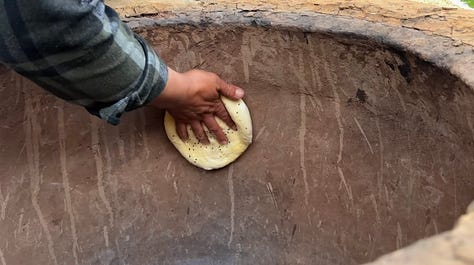
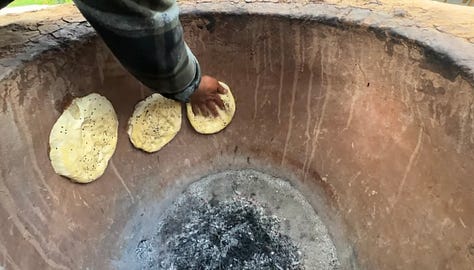
These locations are 2,669 miles away from each other.
The underlying diffusion is coming from the technology of the tandoor, which, according to Wiki, is a large urn-shaped oven, usually made of clay, originating from the Indian Subcontinent. Since antiquity, tandoors have been used to bake unleavened flatbreads, such as roti and naan, as well as to roast meat. The tandoor is predominantly used in Western Asian, Central Asian, South Asian, and Horn of African cuisines.
The roots of the tandoor can be traced back over 5000 years to the ancient Indus Valley Civilization, one of the oldest known civilizations. The standard heating element of a tandoor is an internal charcoal or wood fire, which cooks food with direct heat and smoke. Tandoors can be fully above ground, or partially buried below ground, often reaching over a meter in height/depth. Temperatures in a tandoor can reach 480 °C (900 °F; 750 K), and they are routinely kept lit for extended periods. Therefore, traditional tandoors are usually found in restaurant kitchens. Modern tandoors are often made of metal. Variations, such as tandoors with gas or electric heating elements, are more common for at-home use.
I’m not satisfied with the dating of the word tandoor on account that I don’t accept the Epic of Gilgamesh being an authentic document of antiquity on account of it not being discovered till the 19th century, but the etymology seems legit. According to Wiki, The English word comes from Urdu tandūr, which came from Persian tanūr (تَنور) and ultimately came from the Akkadian word tinūru (𒋾𒂟), which consists of the parts tin 'mud' and nuro/nura 'fire' and is mentioned as early as in the Akkadian Epic of Gilgamesh, cf. or Avestan tanûra and Middle Persian tanûr. In Sanskrit, the tandoor was referred to as kandu. (Does this indicate that t and k interchange?)
Words related and similar to tandoor are used in various languages, for example the Dari Persian words tandūr and tanūr, Arabic tannūr (تنّور), Armenian t’onir (Թոնիր), Assyrian tanūra (ܬܢܘܪܐ), Azerbaijani təndir, Georgian tone (თონე), Hebrew tanúr (תנור), Kyrgyz tandyr (тандыр), Kazakh tandyr (тандыр), Kurdish tenûr, Tat tənur, Tajik tanur (танур), Turkish tandır, Turkmen tamdyr, Uzbek tandir, Luganda ttanuulu, and Somali tinaar.
The language combined with the technology and cooking techniques is about as positive of an example of cultural diffusion as one can get. Knowing these signs of diffusion are the death knell of false narratives foisted upon us like the empire of Tartaria existing in Europe. Samarkand was the capital. So why doesn’t Europe use tandoors and make bread like this? Because the Tartaria and mudflood narrative was bullshit.
If you’re interested in real research regarding cultural diffusion, read the Spirit Whirled series.






Become a member to access the rest of the article, which will delve into the craft of statue-making.
Keep reading with a 7-day free trial
Subscribe to Ancient History, Mythology, & Epic Fantasy to keep reading this post and get 7 days of free access to the full post archives.

